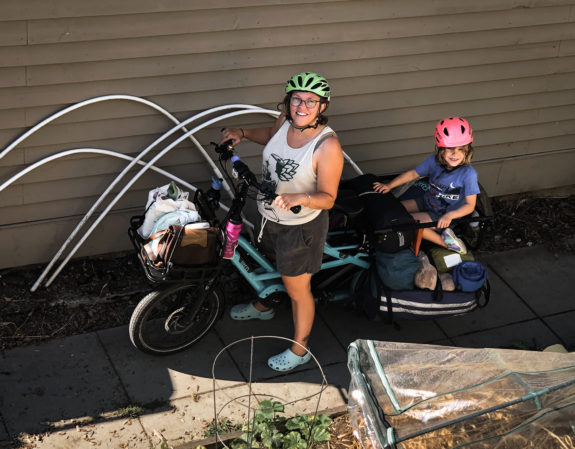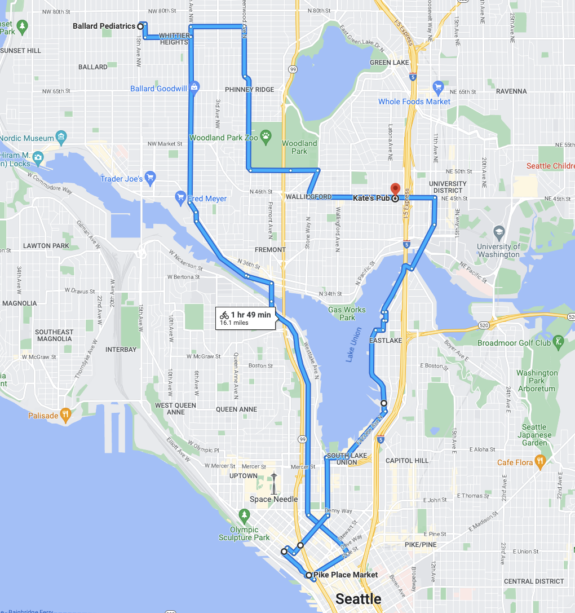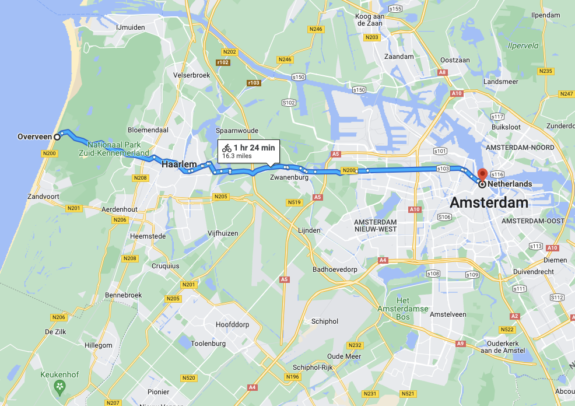
The Washington State Senate and House are both mulling over how to incentivize more residents to ride electric bicycles, and the Senate’s version of the state budget would provide a $300 rebate for any state resident who buts an e-bike or $1,200 for low-income e-bike buyers. These rebates would bring the cost of owning an e-bike closer to a pedal bike, ensuring a rapid increase in the number of people riding them in communities across the state.
Washington Bikes has a handy online tool you can use to tell legislators that you support these investments as well as other biking and safe streets measures under consideration.
E-bikes are an incredible technology for communities without dense and walkable urban environments, which describes nearly all of Washington State. Where a pedal bike is still an amazing machine that can do much more than most people give it credit for, e-bikes are one of the world’s emerging technologies that truly does live up to the hype. If anything, the potential within them is underestimated and underrated.
E-bikes make daily trips across fairly long distances practical for a huge percentage of Washington individuals and families. While the most determined and fit among us have shown that long daily rides are possible using pedal bikes—even with kids and grocery runs and all—e-bikes can make these trips faster and easier. For example, the other day I had to take my kid to the doctor for a check-up before school. I didn’t even think about the distance before leaving the house. But when I got back, I realized that my morning ride to the doctor, preschool and home was more than 16 miles, mostly in the rain. All that before my morning coffee.
But here’s the thing: It wasn’t a big deal. It was just another day of doing kid transportation with an e-bike in Seattle. I didn’t even think of it as exercise. There was no huffing and puffing or anything resembling strenuous exercise despite the many hills along the way. It was probably about as physically exerting as a brisk walk.
For comparison, if you started in the city center of Amsterdam and biked 16 miles west, you’d travel through farm land, cross the entirety of the city of Haarlem, and ride through a national park before reaching the North Sea. The distances people often need to cover in Washington State communities just to do basic things can easily balloon like this, and that’s why e-bikes are such a powerful tool for helping more people live their daily lives on bicycles.

 This is also a great time for e-bike incentives because e-bikes have finally broken fully into the mainstream. The days of needing to import a fancy European e-bike or try your luck with an unknown online-only bike maker are over. REI sells them these days, for example. Even Trek now has a full lineup of e-bikes for all users, from road to mountain to commuter to family-hauling cargo bikes. Having access to trustworthy warranties and professional local bike mechanics makes now the perfect time for public investment in the e-bike industry. The investment will return to the state in the form of a larger local bike industry which will become necessary in every community. And, of course, there are all the other economic benefits that come from more people riding bikes, such as improved public health, decreased traffic and car parking needs, and decreased environmental destruction.
This is also a great time for e-bike incentives because e-bikes have finally broken fully into the mainstream. The days of needing to import a fancy European e-bike or try your luck with an unknown online-only bike maker are over. REI sells them these days, for example. Even Trek now has a full lineup of e-bikes for all users, from road to mountain to commuter to family-hauling cargo bikes. Having access to trustworthy warranties and professional local bike mechanics makes now the perfect time for public investment in the e-bike industry. The investment will return to the state in the form of a larger local bike industry which will become necessary in every community. And, of course, there are all the other economic benefits that come from more people riding bikes, such as improved public health, decreased traffic and car parking needs, and decreased environmental destruction.
E-bikes also don’t face the same issues that keep holding back electric cars, meaning there is a very high ceiling for adoption within our communities as they currently exist. Their batteries don’t require special high-voltage charging stations, and the batteries are an order of magnitude smaller and easier to source. My large cargo bike’s 400 Wh battery is the equivalent of about 4 or 5 laptop batteries. So if I ride 30 miles, I’ll use about the same amount of electricity as charging a laptop 5 times. For comparison, the Tesla Model 3 (one of the more efficient electric cars on the market) is rated at about 250 Wh/mi. The energy use is barely comparable between the two. Electric bikes are ridiculously efficient. And better yet, you don’t have to stress about range anxiety because even if the battery runs out of juice, it simply becomes a slightly sluggish bicycle.
Of course, e-bike rebates will only go so far on their own. The biggest impediment to more cycling in Washington State is the lack of safe bike routes. But e-bike rebates will pair perfectly with investments in safe streets and highways. We can reduce traffic deaths and injuries for all Washington road users while also encouraging more people to get around by bike. Let’s do it.








Comments
7 responses to “Why an e-bike incentive program is one of the best transportation investments Washington can make”
Your last paragraph sums it all up. We need both programs that incentivize the purchase and use of e-bikes and safe bike infrastructure. Riding a long distance is much less of an issue if it can be done safely.
Well said. I love to ride bikes but would not consider my 18 mile round trip commute without an e-bike. I get to work and home with exercise (as you say, akin to a brisk walk) as my bike is a Class 1 mid-drive that is pedal assist only, with assist fading out as I approach 20mph. With a 10 speed cassette, there’s no hill I can’t climb in the lowest gear.
The systems from Bosch, Shimano, Yamaha, and Brose are extremely sophisticated and natural feeling with sensors that measure torque (pressure on pedals), cadence, and wheel speed hundreds or thousands of times per second. You’re riding a bike, just with the ability to erase hills. Unfortunately a lot of people’s only experience with them is on basic hub motor models which start jerkily and operate more like an on / off switch with only a cadence sensor that kicks the motor on abruptly.
I genuinely feel that if more people tried a quality mid drive commuter e-bike with rack and fenders, they would immediately buy one for their commute or recreation. The big downside with the mid drive models is they tend to be much more expensive. A subsidy could go a long way towards helping people buy a bike that they will actually enjoy riding.
I own an e-bike and enjoy riding it, but most people who own bikes (whether electric or otherwise) barely ride them, so I can’t help wondering if an e-bike subsidy is going to end up subsidizing a lot of bikes that just end up sitting in people’s garages while they drive their cars around, rather than bikes that actually get ridden as car replacements. If it were somehow possible to target this subsidy to zero-car households, I think it would have a much greater chance (and much lower cost to taxpayers) of actually working as intended.
I guess I would say to this, let’s not make the perfect the enemy of the good.
How do you handle overnight storage for your e-bike? I’ve been poring over options to upgrade from my acoustic ride and a key issue for me is how to store the e-bike safely overnight. I can bring my current bike inside, and it will fit in my apartment or in the building storage locker. But I haven’t found a cargo-type e-bike yet that’s light and compact enough for that, at least in my building. (It’s an older building with small elevators and no dedicated bike room.)
While I 100% support an e-bike incentive program, I think there’s are equity and uptake issues that need to be addressed, in that the no-car households that could and should benefit most are more likely to be living in older multi-housing stock without suitable secure storage or charging setups. No one benefits from an e-bike that gets stolen or trashed on the street. E-bike supportive design mandates for new multi-family construction are clearly necessary, to add to those smart developers already ahead of the curve. But that doesn’t address existing stock.
I’d love to see ideas for something like community “e-bike mini-garages” for securing and charging bikes overnight, based in storefronts or small commercial spaces. In addition to direct bike-purchase subsidies, we should think how to incentivize and support small business models for that, or fund directly via SDOT or other agency. I think this type of infrastructure is a third element that needs focus, in addition to rebates and safe routes, in order to have widespread and equitable uptake of e-bikes as practical daily transport.
Otherwise, it seems like the group most likely to have the cost and logistical complications of an e-bike pencil out for them (even with a purchase subsidy) are going to be single-family homeowners with private garages (AKA, the usual suspects when it comes to benefiting from direct and indirect subsidies of all kinds).
For those who live near light rail, there are lockers available for a relatively inexpensive annual fee that will fit most “standard” e-bikes and some models of cargo bike. But there aren’t many of them and there’s usually a wait list. A couple of the stations have nearby bike cages, but I’m unsure whether they accommodate cargo bikes or not. I’m not sure if I’ll be allowed to include a link in a comment, but here’s more information — https://kingcounty.gov/depts/transportation/metro/travel-options/bike/parking.aspx.
Bike cages and storage lockers are also becoming more and more common in multi-unit/apartment housing. I would encourage anyone considering utilizing a bike cage in an apartment building to purchase renter’s insurance (it’s really quite affordable, and covers way more than your bike) and use locks on your bike within the cage, as bike cage break-ins are unfortunately quite common.
Hello, does anyone know which state bill number this is? Id like to track its progress on the WA state legislation site: https://app.leg.wa.gov/billsummary